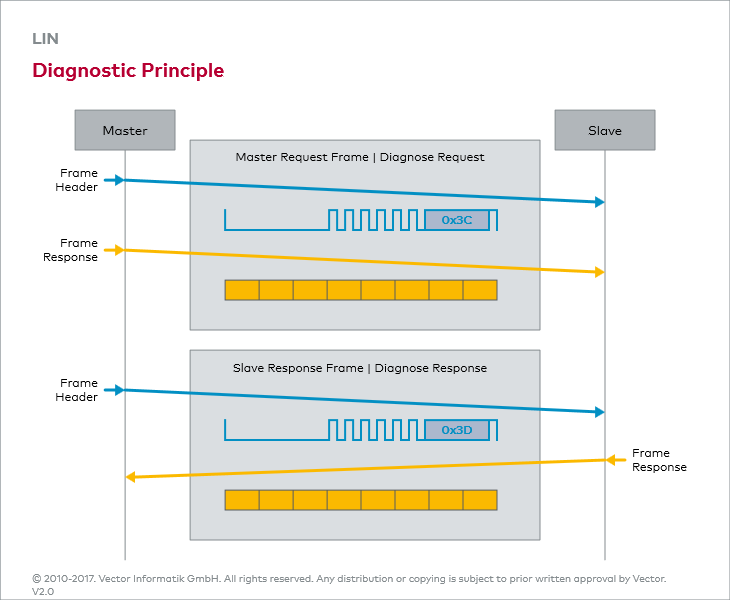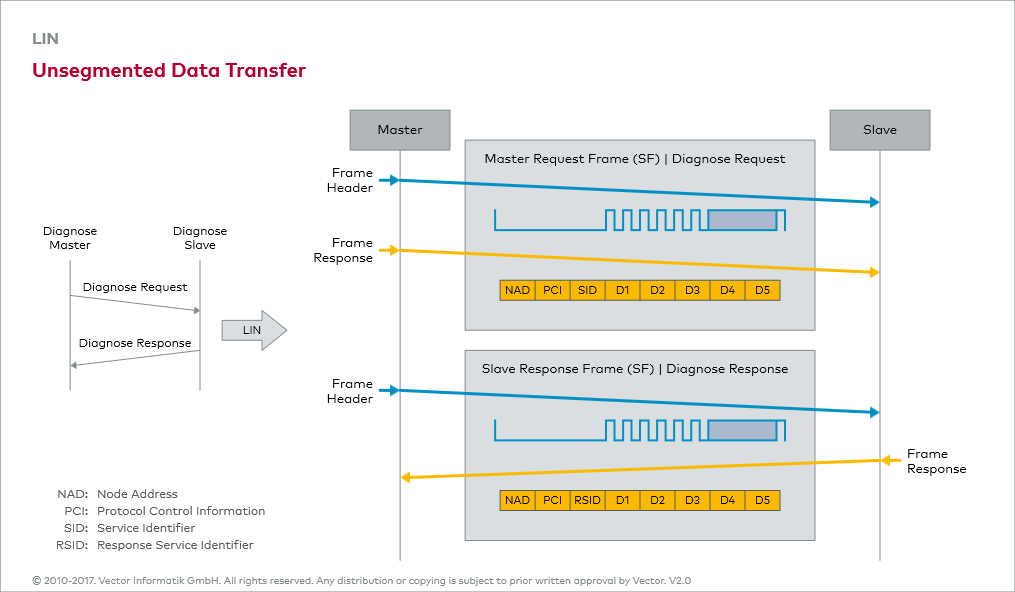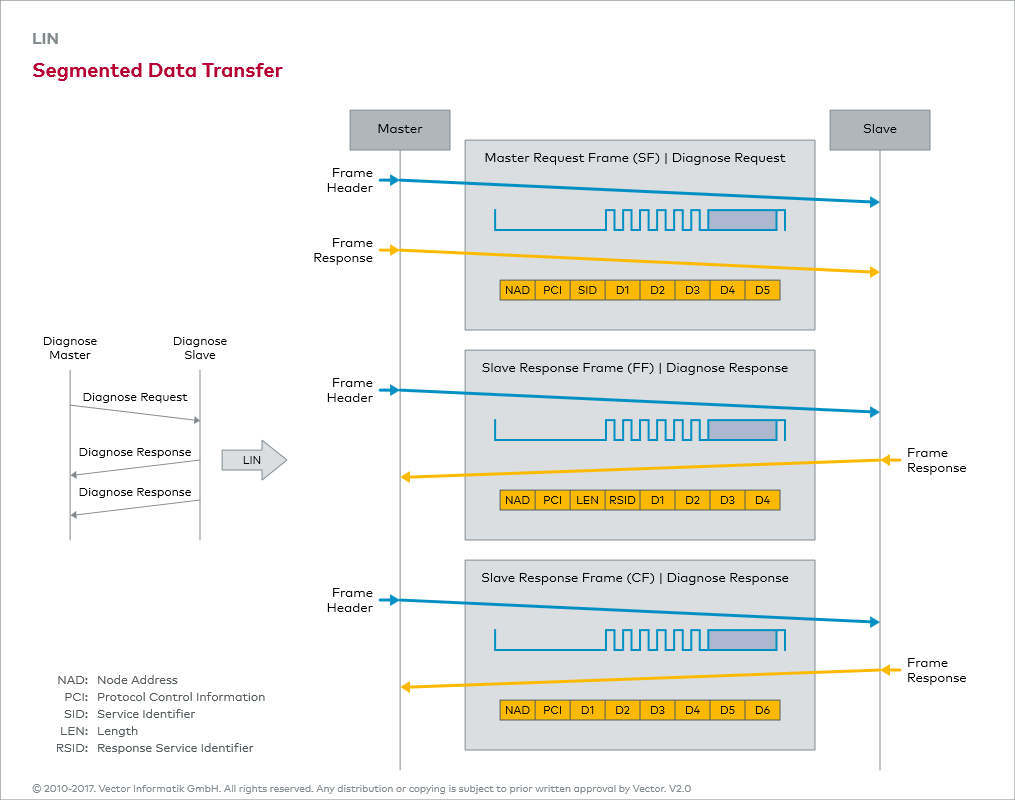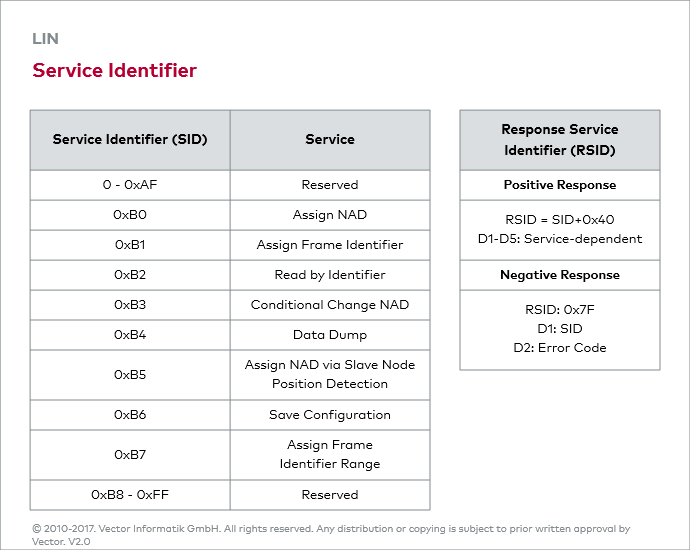Diagnostics
Node Adress for Diagnostics (NAD)
The ISO transport protocol defines the structure of the Frame Response and the functionality of the data it contains. The first byte of the frame response always contains — regardless of whether it is a master frame response or slave frame response — a formal node address (NAD) of the slave to be configured or diagnosed.
Protocol Control Information (PCI)
The second byte of the frame response (PCI) gives information on the transfer mode. The ISO transport protocol defines an unsegmented and a segmented data transfer. An unsegmented data transfer is performed with one master request frame and one slave response frame (SF). For example, Diagnostic Requests that are used to configure a node are as a rule unsegmented.
Frame Types
Segmented data transfer is used if eight data bytes are insufficient to transmit the diagnostic data. In this case, the data are segmented, i.e. distributed to multiple frames. The first frame of such a segment series is referred to as the first frame (FF), while all subsequent frames are consecutive frames (CF). The size of the entire data block is shown in the FF.
Service Identifier (SID)
The master uses what is known as the service identifier (SID) to communicate to the slave which diagnostic service should be executed (see figure: Service Identifier). The third byte is provided for this in the diagnostic request. In the slave response frame, the so-called RSID is used instead of the SID. The diagnostic services are described in the following specification: Node Configuration and Identification.




